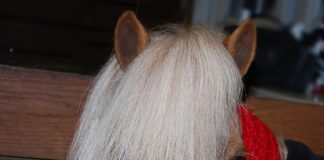Thirty to 90 minutes in the sun will give the average person all the required daily vitamin D. But a horse’s hair coat alone creates such a significant barrier to absorption that it typically takes 5 to 8 hours of exposure to ultra violet light for horses to produce enough vitamin D. Compound that with added blocks like fly spray, coat conditioner, blanket or sheet, or decreased body oils due to bathing, and it becomes apparent that in some cases, horses may not get enough of this vital ingredient.

D3 is actually a hormone. A hormone, simply put, is a substance that is produced in one place and delivers a message to another place. D3 is produced in the kidney, and its message is to insure correct blood calcium levels which are critical to the proper function of your horses’ bones, joints, and muscles. D3 looks first to increase absorption by the intestine of ingested calcium, then if necessary, it will key the bones to give up calcium, and finally, it will instruct the kidneys to reduces calcium losses through urine.
There is a vitamin D2 which is found in plants. Plants make D2 from sunlight exposure, much in the same manner as D3 is made in animals, except the original starting point is ergosterol. Most vitamin supplements, however, contain the animal source – vitamin D3 – because it tends to be more stable and therefore has a longer shelf life. But when your horse eats fresh grass, he is getting the plant form. Once inside your horse’s body, they both have the same function.
Vitamin D deficiency is more common than you might think.
Risk Factors for Vitamin D Deficiency in Horses
- Horses that are kept indoors have the highest risk.
- Frequent bathing with soap inhibits the body’s ability to produce vitamin D simply because the precursor in body oil (7-dehydrocholesterol) is washed away.
- The reduced intensity of sunlight during the winter or at higher latitudes (starting with the upper one third of the U.S., into Canada) inhibits vitamin D production.
- Vitamin D does not survive in hay.
Deficiency causes reduced appetite, slowed growth, physitis in growing horses, bone demineralization (leading to stress fractures and bone deformities), and poor muscle contraction.
Horses do best when they receive at least 6.6 IU of vitamin D per kg of body weight. For an 1100 lb (500 kg) horse, this translates into 3300 IU/day. Sunlight exposure—5 to 8 hours/day under optimal conditions—will produce this amount of vitamin D.
Too Much Vitamin D
Vitamin D toxicity is unusual but possible, and somewhat confusingly, the signs of toxicity are similar to deficiency: reduced feed intake, poor growth, and an unthrifty appearance. An upper limit of 44 IU/kg of body weight (22,000 IU for an 1100 lb horse) has been established. Improper supplementation can cause excessively high intake; check all your supplements and fortified feeds to make certain you’re feeding a safe amount.
The very good news is that sunlight exposure cannot lead to excessive vitamin D production. So give your horse as much time outdoors, with minimal chemical or physical barriers. Let that vitamin D message do its wonders for the good of your horse.






My horses are on pasture all year, 24/7. This kinda makes me glad that I don’t have stalls. =)
It’s always best for horses to be outdoors on pasture. And here’s the #1 reason why!
This is a great article. I’d love to see more like this.